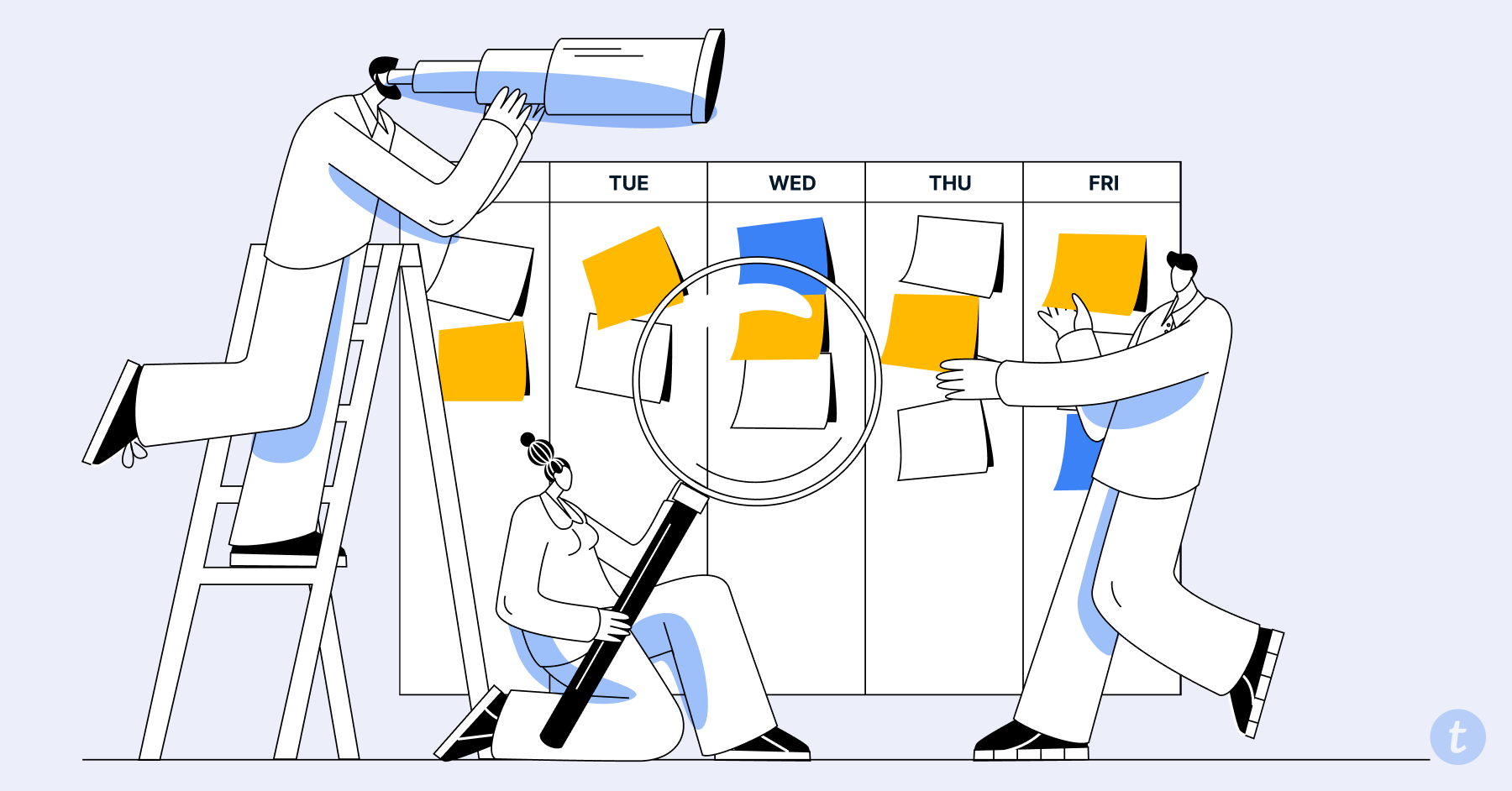A lot has changed in the world over the last few years, including how we host group meetings. It seems like a lot of times we’re bouncing from Zoom meeting to Zoom meeting, wondering when the meetings will slow down enough to focus on other important parts of your job.
While it is important to have meetings occasionally so you can have a conversation with your whole team at one time, it does seem like a lot of the meetings are less important than others. Unproductive meetings are far too common, with their costs reaching into the billions.
If you want to host a meeting that your team will leave saying “Wow, that was productive!”, stick around. If you start with a clear objective and the right people in attendance and make sure the content benefits everyone involved, the results will amaze you. We’re going to show you the best way to schedule meetings with a group.
5 Best Practices to Schedule Meetings With a Group
There are some factors that will impact your process for scheduling meetings. One of the biggest is whether you are in charge of an entire organization or a smaller team. These tips may make it much easier to schedule group meetings.
1. Know the purpose of your meeting
The most important thing when scheduling a meeting is knowing what you want to accomplish. What are your goals? What is the outcome you’re looking for? The answer to these questions will tell you whether or not a meeting is needed. Some things that we think would make a good meeting could really be summed up in an email.
For weekly project updates, for example, there are plenty of other means to keep everyone up to date rather than requiring their attendance in a meeting. You can use project management apps where all of the relevant information can be stored so the whole team has access to up-to-date information all the time, or you can set up a dedicated Microsoft Teams or Slack channel for status updates.
2. Schedule meetings when most people are likely to be willing to attend one
When it comes to picking a day and time for your meetings, it makes the most sense to keep everyone’s workflow in mind. Meetings late in the day are less likely to have the kind of engagement you’d see in earlier meetings. Friday afternoons are the worst time to schedule a meeting since so many individuals are ready to get out of there and get their weekends started.
The best time to schedule a meeting is Tuesday or Wednesday before mid-day. These days have fewer absences than other days, and meetings before lunch are more productive because energy levels are higher than they are after lunch. It’s also a smart plan to include built-in regrouping time at the end of the meeting so anyone that has multiple meetings in a row has a few minutes to regroup before they have to participate in another meeting.
3. Choose the attendees based on the value they are likely to bring to the meeting
There are definitely going to be meetings where the whole team needs to be in attendance, but these aren’t as common as you’d think. The truth is, many meetings can be held with a smaller group. The main thing to ask when planning is “Who will bring meaningful information or questions to this meeting? Who will benefit most from the information being presented in this meeting?”
Once you have your list of attendees narrowed down, choose your meeting time carefully. You may need to prioritize one person’s time over other people’s. For example, if an executive or the CEO of your company needs to be in attendance, you would want to accommodate their schedule over the rest of the attendees.
4. Have a definite agenda - Never “wing it”
One of the most notorious pitfalls and time-killers of large group meetings is their tendency to get off-track more frequently than in smaller meetings of just a few attendees. While this is a sign of an engaged audience, it can also lead to a 90-minute meeting taking a 3-hour bite out of the day if not handled deftly.
This is often because the meeting organizer has failed to establish a firm agenda, or if they have, they have failed to stick to it. In many cases, this can be because there are lots of questions regarding the meeting materials being presented. While these questions shouldn’t just be ignored, they should be addressed at a time scheduled to address them.
That said, keep a list or two nearby when running meetings to jot down questions or other issues that should be discussed or addressed, but can’t be added to the current agenda. You can always circle back or make a separate meeting for those items.
Another popular tactic is to determine an appropriate amount of “wiggle room” that you can add to the meeting to address issues or questions that come up, without running over the scheduled time. This way, you can present your materials, then defer to the questions list for any remaining time.
5. Limit the number of group meetings on any given day (as they can be mentally taxing if overdone)
The only thing worse than spending several hours in a single meeting, is spreading that time across multiple meetings. Not only can it kill productivity for the day, but it can be taxing on both the mental state and the morale of the team. If you have three important meetings to get done, try not to put them on the same day. Give staff some time to recuperate.
Wrapping Up
During the process of group meeting scheduling, it’s important to remember that some meetings could be summed up in an email rather than making everyone attend a virtual or in-person meeting. If a meeting is unavoidable, the best thing to do is figure out your objective, only include the individuals that really need to be there, and schedule the meeting for the most convenient time for everyone involved.
And, when you’re ready to book your meetings, be sure to do it with Taggg. Taggg makes it easy to quickly determine the availability of participants without the typical headaches associated with booking a meeting. Get started with Taggg free, today!

